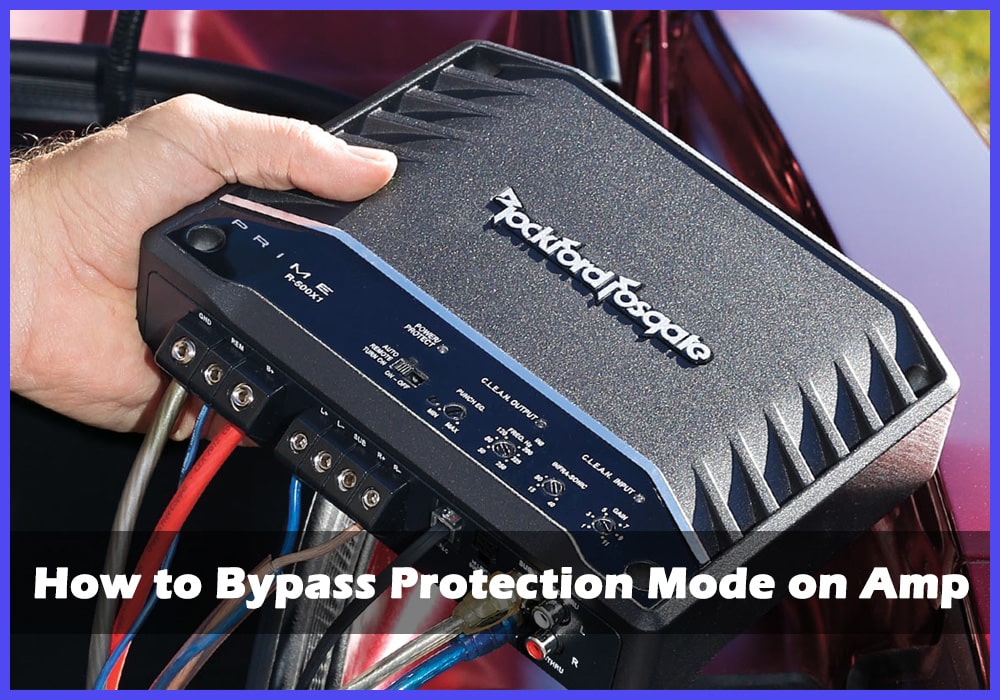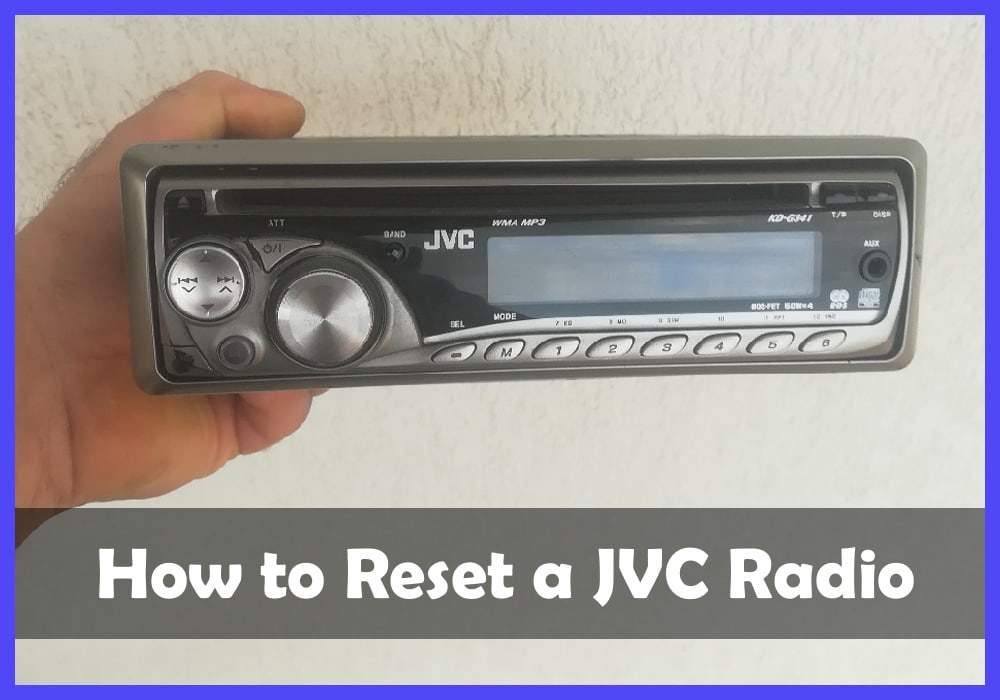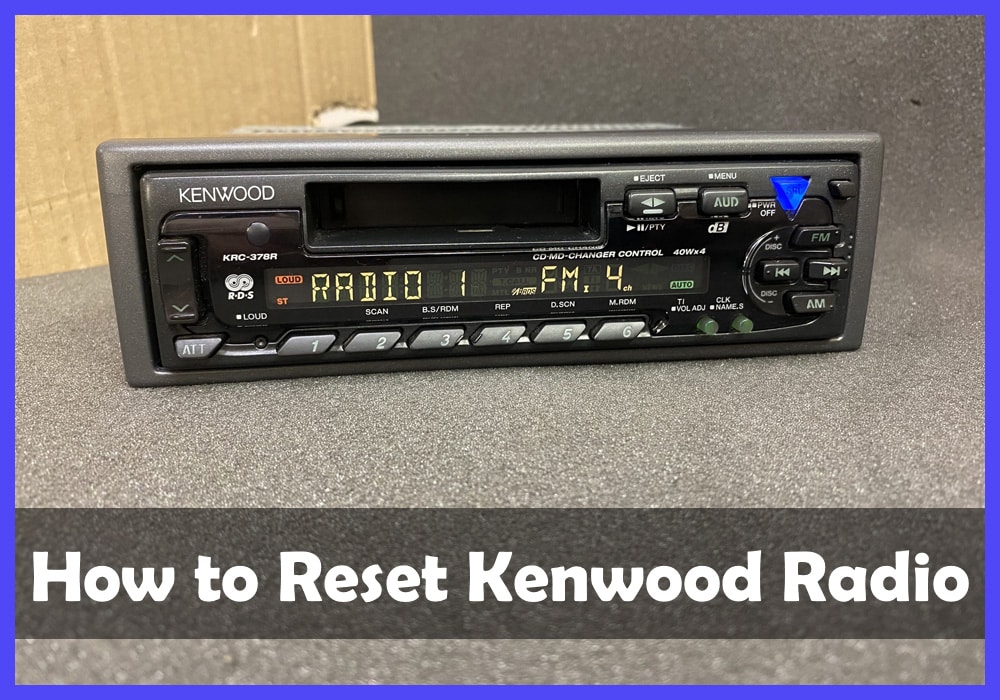
If you’re experiencing difficulty pushing your car’s amp to the limits, it may be because of Protection Mode. This shield is designed to conserve energy and prevent damage from excessive power going to the speakers. The issue is that Protection Mode causes sound distortion as well as other problems like low sensitivity and amperage depletion. Unfortunately, most users get stuck when trying to bypass it—but don’t worry! We’ll step you through how to do just that; with our guide, you’ll soon have your car sounding better than ever again!
Why is my amp in protection mode?
Often a problem in your wiring may cause your amp to go into protection mode. This can happen by having a speaker wire not securely connected or the wiring on your battery and alternator being incorrect. However, there can be several factors that lead to an amp going into protection mode; here are the most common causes:
-
Load mismatch
Load mismatch can create an issue when connecting amplifiers and subwoofers, as these devices may have different load capacities. If an amplifier with a higher impedance is connected to a subwoofer with a lower impedance, the amplifier may be unable to handle the load and shut down in protection mode. You’ll know this has happened if you find that your amplifier stops functioning when playing powerful bass music at high volume. This issue needs to be corrected to ensure your audio system runs smoothly.
-
Amp Overheating
When amplifiers are pushed too hard, they can become very hot and cause the internal circuitry to shut down. This is a warning from your amp that it needs to cool off before being used again, so don’t ignore this signal! You’ll need to ensure proper ventilation for your amplifier to prevent overheating in the future.
-
Faulty Speaker/Headunit
A malfunctioning component that is attached to the amplifier, like the speaker or receiver, is another possibility that could cause the amplifier to activate protection mode. For instance, a speaker cable that is shorting out or a malfunctioning head unit can trigger the amplifier to switch to protect mode in order to shield itself against possible damage.
-
Internal Failure
If the above issues are ruled out, then it’s likely that your amplifier has an internal failure. This means the chip or component in the amp is malfunctioning and will need to be replaced. Additionally, you could have a faulty power supply or ground loop that is causing the amp to enter protection mode.
How do I know if my amp is in Protect Mode?
Knowing whether your amplifier is in protect mode can be a tricky business, depending on the device. Generally, if your amplifier has a protection mode display, it will show up when the system goes into protection mode. However, some models might flash or go completely off — in this case, you should check the power supply wires to be sure they are working correctly. If the power light flashes briefly and then turns off without booting up, the amp might be going into protect mode – but it could also mean there’s an issue with the power supply circuit that needs attending to, and you should consult a qualified technician for help.
How to Get Amp Out of Protection Mode
Once you’ve identified the cause of your amp’s protection mode and fixed it, getting your device out of protection mode is a relatively simple process. Below is a step-by-step guide to help you get your amp out of protection mode:
-
Disconnect Speakers
First, unplug the speaker wires from the amplifier. This will help clear any faults that may be present and reset your amplifier to its normal settings. Try turning it back on and see if you bypassed the protection mode. If you did, chances are, the speakers are blown and need to be replaced.
-
Check the Temperature of the Amp
Checking the temperature of your amp is an important practice to ensure that it is functioning properly. If the amplifier feels warm, then it is probably overheating, which could be due to a number of potential issues, including a mismatched load, blown speakers, or a bad power connection. If you think this may be the case, transfer your amp to a space that has more ventilation and make sure there is adequate space around it for air to get in and out. Prevention is better than having to replace or repair your amplifier, so it’s best if you can spot any potential problem before things get too hot!
-
Unplug the Head Unit
If your amplifier continues to function normally after you unplug it then it’s likely a component in the head unit is causing the issue. Unplugging it and then plugging it back in should reset the system, which will often be enough to get your amplifier out of protection mode. If not, you may need to replace or repair the head unit before continuing.
-
Check the Ground Connection
If you’ve gone through the above steps and still can’t get your amplifier out of protection mode, then check the ground connection for any faults. A bad ground connection could be causing the issue, so if it’s loose or corroded, rewire it. It can also be because the cable is too small or of low quality, so make sure the cable is suitable for the amp’s power output.
-
Check All Cables
Make sure all the cables connected to your amplifier are in good working order. Look for any frayed wires or loose connections that could cause a short circuit and replace them if necessary. If everything looks okay, then you may need to call in a professional repair service, as there could be an internal issue with the amplifier itself.
-
Check Impedance Load
Figuring out the right impedance load for your amplifier and speaker system is an important step that often gets overlooked. An amplifier with a capacity of 2 ohms, for instance, may not work correctly if it’s linked to speakers with a capacity of 4 ohms; it will be unable to properly handle the additional load and consume more electricity than normal, causing it to overheat and shut down. To make sure you’ll get optimal performance from your system, remember to check the impedance loads of all connected components.
-
Reset the Amp’s Gain
Finally, a gain button can be used to reset an amplifier and get it out of protection mode. You may need a small screwdriver or a similar tool to do this; simply locate the gain button and turn it counterclockwise until you hear a click or feel resistance, then return it to its original position. This should reset the amplifier’s settings and get it up and running again.
Why does my amp keep going into protect mode?
When an amplifier goes into protect mode, it’s usually because of an issue with the speaker wires, head unit, ground connection, cables, or impedance load. Make sure all of these components are in good working order and that the correct impedance loads are connected to your amplifier and speakers for optimal performance. If you’ve gone through all the steps and still can’t get your amplifier out of protect mode, then it may be time to call in professional repair service.
FAQ
How do you reset an amp?
Resetting your amp is surprisingly easy, requiring only a paperclip. All you need to do is find the tiny hole that's typically labeled reset and then apply firm pressure for a few seconds using the paperclip. It really couldn't be simpler! After doing this, your amp should now be reset and ready to go. Just remember to choose a paperclip that won't bend or break inside the hole so that it doesn't cause any damage.
How do I know if my amp is messed up?
Understanding whether or not your amp is working correctly can be confusing and intimidating, but there are some simple tests you can do at home to figure out the issue. The first place to look is at any physical damage that may have occurred - this could be a loose connection, frayed wiring, or even more serious damage caused by intense heat. From there, it's time to check out the sound quality: Does it sound like everything is too loud? Are some frequencies coming through better than others? If you don't feel comfortable troubleshooting on your own, it's always best to consult with an amp technician who understands these systems and can give you accurate advice.
How can you tell if an amp is blown?
There are three main ways to identify if an amp is blown: you can observe physical damages, check for burning smells, or pay attention to any unusual sounds coming from it. If you spot any issues with the wires or connectors and see any smoke, flame, or burn marks anywhere on the device, then there's a good chance that your amp has become damaged beyond repair. Also, if you detect any foul odors coming out of the amp while it's running, this could be caused by an internal short circuit and should be checked as soon as possible. Lastly, listen carefully to make sure none of the speakers are producing strange noises, such as humming or buzzing, that weren’t there before.
Why Do Amps Go into Protect Mode?
There are several reasons an amplifier may go into Protect Mode. Oftentimes, this is due to a problem with the circuitry, like a short circuit or a working overload. Additionally, if there is excessive heat build-up from being played at too high of a volume level or from blocked vents or overcrowding in the area surrounding the amp, it will trigger the amp to go into Protect Mode in order to prevent any permanent damage that could occur. So if you find your amp entering Protect Mode unexpectedly, take some time to look for potential issues and fix them accordingly before using your amp again.
Conclusion
Understanding the basics of amplifier operation and diagnostics can save you time, money, and frustration. Knowing how to reset an amp, troubleshoot common issues, and identify when it’s time to call in a professional can help ensure that your system sounds its best every time you turn it on. With these tips in mind, you’ll be well on your way to getting amazing sound out of your amplifier. Good luck!





